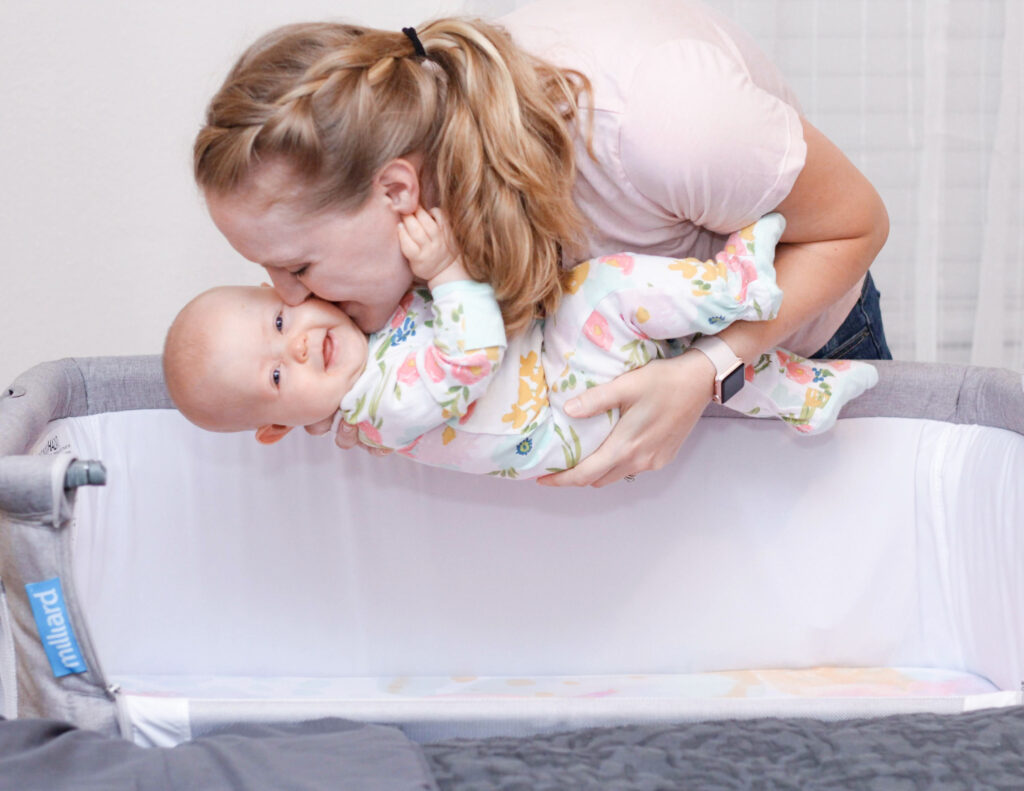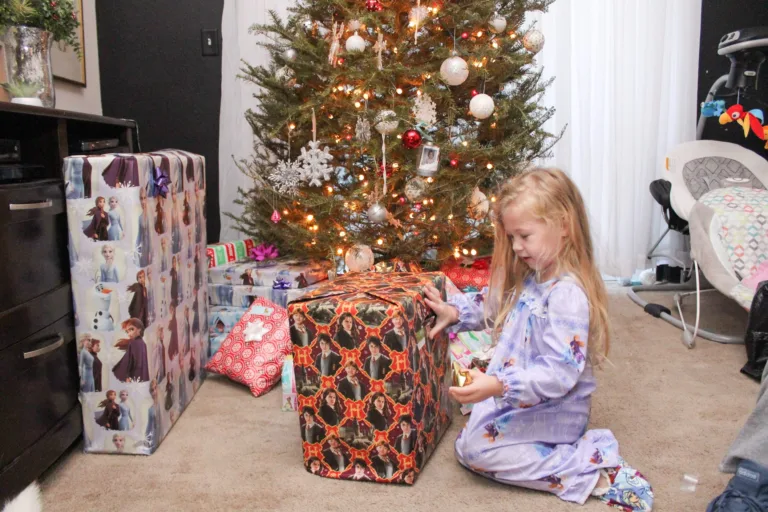Merlin’s Magic Sleep Suit: The Ultimate Baby Sleeping Suit
As a parent, you know that a baby’s sleep is precious – for both them and you. One product that has been a game-changer for many parents, myself included, is the Merlin’s Magic Sleep Suit. In this candid review, I’ll delve into the magic behind this baby sleeping suit, sharing my personal experiences and insights, and explaining why it’s considered one of the best options for your little one’s sleep.
This post contains affiliate links. Please read my disclosure.
What Is Merlin’s Magic Sleep Suit?
Merlin’s Magic Sleep Suit is a wearable blanket designed to help your baby sleep soundly and safely. It’s recommended by pediatric professionals and follows the guidelines of the American Academy of Pediatrics (AAP) to provide a safe sleep environment for infants. This sleep suit comes in various sizes, with the 3-6 months range being a popular choice for parents.
The Startle Reflex and Its Impact
Newborns often have a strong startle reflex, which can lead to disrupted sleep. This is where Merlin’s Magic Sleep Suit comes to the rescue. This suit’s snug yet gentle design helps dampen the startle reflex, allowing your baby to sleep more soundly. It acts as a transitional product between the swaddle and sleeping bags, ensuring your baby develops good sleep habits right from the start.
As newborns, muslin swaddles and Halo Sleep Sacks have always been my favorite. When my babies started gaining strength and were able to break free from their swaddle, we began transitioning to Merlin’s Magic Sleep Suit.
The Design: A Closer Look at the Best Baby Sleeping Suit
The Merlin’s Magic Sleep Suit has long sleeves, making it an excellent option for different seasons and keeping your little one warm during colder months. Made from breathable, organic cotton, it’s gentle on your baby’s skin and provides just the right amount of warmth.
The baby sleeping suit features an outer layer that’s soft and comfy while creating a cozy sleep environment in your baby’s crib. Plus, it has ankle cuffs for extra comfort, even during those restless nights.
Easy to Use
One of the best things about Merlin’s Magic Sleep Suit is its practicality. Thanks to a two-way zipper, diaper changes are a breeze, even in the middle of the night. It’s designed with parents’ convenience in mind and ensures that your baby stays comfortable, both during sleep and while transitioning into it.
Safe Sleep Habits
Parents can rest easy knowing that the Merlin’s Magic Sleep Suit complies with safe sleep guidelines. It eliminates the need for loose or thin blankets when babies start wiggling around, reducing the risk of suffocation. It also meets the thermal overall grade (TOG) ratings, ensuring your baby doesn’t overheat.
From 3-12 Months and Beyond
Suitable for babies from 3-12 months old, these baby sleeping suits are a versatile option for active sleepers. It’s ideal for those who’ve outgrown swaddling but aren’t quite ready for a traditional sleeping bag.
Transitioning to Toddlerhood
As your baby grows, Merlin’s Magic Sleep Suit offers an easy transition. You can choose the larger sizes, designed for 6-9 months and 12-18 lbs, providing extra warmth without compromising safety. There are also two options, fleece or cotton, based on the temperature and season. Plus it comes in pink, blue and yellow colors. There is also a “walking” version for older babies.
Experience the Magic for Yourself
In my experience, Merlin’s Magic Sleep Suit is a game-changer for baby sleep. The extra comfort, breathability, and snug design provide parents and babies with the good night’s sleep they deserve. This baby sleeping suit is the perfect size and weight for a safe and cozy sleep.

Simple Sleep Tips for Your Baby
If you’ve found this post reviewing the Merlin Magic Sleep Suit, you may be desperate for a good night’s sleep with a baby who is just not having it. Most baby’s are not born “good sleepers” despite what strangers may suggest. Babies need to be taught how to sleep. Here are some essential sleep tips for babies that may help, but remember whatever works best for you is most important!
Consistent Sleep Schedule
Establish a consistent sleep schedule for your baby. Consistency helps regulate their internal clock and makes it easier for them to fall asleep and wake up at the same times each day.
Create a Bedtime Routine
Develop a calming bedtime routine to signal to your baby that it’s time for sleep. This routine could include activities like a warm bath, a bedtime story, or gentle rocking.
Safe Sleep Environment
Ensure your baby’s sleep environment is safe. Use a firm and flat mattress, remove loose bedding, and keep the room at a comfortable temperature. Always put your baby to sleep on their back.
White Noise Machine
White noise machines can help drown out background noise and create a soothing environment for your baby. They mimic the sounds your baby heard in the womb. I love the Hatch sound machine line.
Dark Room
Make sure the baby’s room is dark during sleep times. This can help signal to your baby that it’s time to sleep, even during the daytime. Dark out curtains are a must!
Feeding Schedule
Create a feeding schedule during the day. Make sure your baby gets enough nourishment during daylight hours to minimize nighttime feedings.
Avoid Overstimulation
Limit stimulating activities before bedtime. Avoid bright lights, loud sounds, or vigorous play right before sleep.
Be Mindful of Sleep Associations
Try to avoid creating associations that require your presence for your baby to fall asleep. Instead, put them down drowsy but still awake.
Nighttime Diaper Changes
Minimize nighttime diaper changes unless necessary. Choose a high-quality, absorbent diaper to reduce the chances of leaks. I prefer Costco brand diapers.
Check for Discomfort
If your baby is having trouble sleeping, check for signs of discomfort, such as a wet diaper or tight clothing. Make sure your baby’s sleepwear is comfortable.
Create a Comfortable Sleep Space
Ensure your baby’s crib or bassinet is comfortable and free from potential hazards. Remove stuffed animals, pillows, or heavy blankets that could pose suffocation risks.
Keep Interactions Calm
If your baby wakes during the night, keep interactions calm and soothing. Avoid stimulating play or activities that could keep them awake.
Watch for Sleep Cues
Pay attention to your baby’s sleep cues, like rubbing their eyes, yawning, playing with their ears or becoming fussy. Putting them to bed when they’re drowsy but not overtired can make sleep come more easily.
Teething Comfort
If your baby is teething and in pain, provide appropriate teething remedies to help them sleep more comfortably.
Adjust to Growth Spurts
Be prepared for growth spurts, during which your baby may wake up hungry more often. Adjust your feeding schedule as needed. As my mom always said, 3/6! Babies typically go through cluster feeding and growth spurts on the 3/6 marks (3 days, 6 days, 3 weeks, 6 weeks, 3 months, 6 months). This has been true for all four of my babies and lines up with many big development marks. See more about common sleep regressions below.
Monitor Sleep Patterns
Keep an eye on your baby’s sleep patterns and adapt your routines to their changing needs as they grow.
Remember that every baby is unique, and what works for one may not work for another. It may take some trial and error to find the right sleep routine for your baby, so be patient and flexible in your approach.
Sleep Regressions
Sleep regressions are common phases in a baby’s development when their sleep patterns may temporarily change. Here are some common sleep regression periods and descriptions for each one:
4-Month Sleep Regression
Description: At around 4 months, babies experience significant changes in their sleep patterns. They transition from deep sleep to lighter sleep stages, making it easier for them to wake up. Additionally, they may begin to develop sleep associations.
Signs: Frequent night waking, shorter naps, and difficulty falling asleep.
8-10 Month Sleep Regression
Description: During this regression, separation anxiety can peak. Babies may become more aware of their surroundings and fear being separated from their caregivers.
Signs: Increased nighttime wake-ups, difficulty settling to sleep, and wanting to be held or comforted.
12-Month Sleep Regression
Description: Around their first birthday, some babies experience a sleep regression due to developmental leaps, teething, or transitioning to one daily nap.
Signs: Nighttime awakenings, reluctance to nap, and more alertness at bedtime.
18-Month Sleep Regression
Description: This regression can be related to cognitive and language development. Toddlers may have more separation anxiety and be more curious about their environment.
Signs: More night awakenings, resistance to bedtime, and separation anxiety.
It’s important to note that not all children experience sleep regressions, and the timing and severity can vary. Sleep regressions are usually temporary and part of the child’s normal development. Parents can help by maintaining consistent sleep routines and ensuring a safe and comfortable sleep environment for their children. If sleep disturbances persist or significantly impact daily life, it’s a good idea to consult with a pediatrician or sleep specialist for guidance.
Sleeping Baby = Happy Mama!
In conclusion, if you’re a parent in search of the best sleep solution for your little one, Merlin’s Magic Baby Sleeping Suit is an excellent choice. Don’t just take my word for it; the stellar reviews speak for themselves. Experience the magic of better sleep for both you and your baby – it’s a game-changer and a must-try product in your parenting journey.








